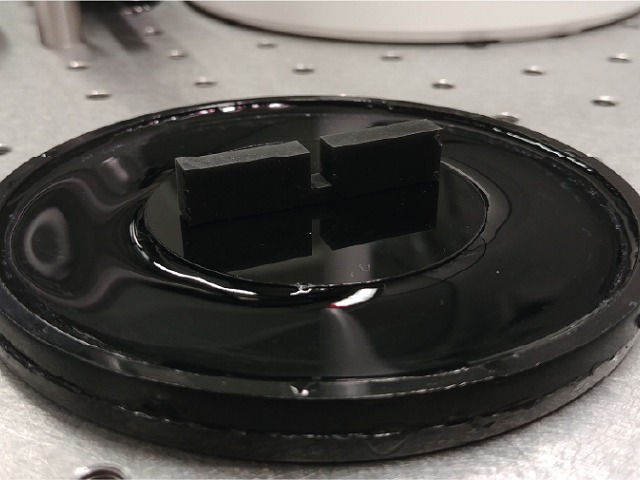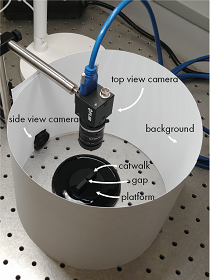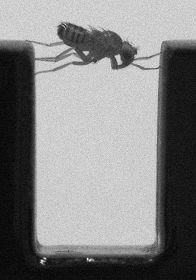BCN Research Master - Germany, Munich

Searching for a master's thesis project, I was sure I wanted to work on the neurobiology of the visual system. Sensory biology, the science of how nervous systems inform an organism about the external world, had been a passion of mine since early in my bachelor's studies. Prof. Dr. Jean-Christophe Billeter of the UG referred me to the Max Planck Institute of Biological Intelligence in Munich, Germany, where Dr. Lisa Fenk had just set up a new research group.
Dr. Fenk had previously discovered that fruit flies, one of the most important neurobiological model organisms, move their retinas beneath their fixed compound eyes. Retinas are the thin sheets inside eyes that sample incoming light. As do many animals including humans, flies move their retinas to stabilize the internal image against external visual motion, but they also perform spontaneous convergent movements with both eyes.

Dr. Fenk and I designed my project around these convergent retinal movements, asking: what are they good for? We hypothesized that by convergently scanning the frontal visual field, the flies estimate target distances. We created two genetic fruit fly lines. In one line, we turned off the nerve cells that drive the retinal muscles and in the second line we left these cells unaffected. We then 3D-printed a small catwalk intersected by a gap in the middle. From previous research, we knew that walking flies visually estimate the width of such a gap and adjust how they cross it. After cutting the flies' wings, we let them explore our catwalk. Using video recordings and a machine-learning algorithm, we tracked flies during gap crossing to see if silencing retinal movements had any effect on the dynamics of gap-crossing behavior.
And indeed: flies that could not move their retinas crossed the gap at lower heights than control flies did. When manipulated flies entered the chasm, their bodies were also oriented away from the opposite wall. These findings are consistent with the idea that flies misjudged the distance to the gap's opposite side.

Some of my data found their way into the original description of fruit fly retinal movements, which is about to be published in Nature, a very high-ranking scientific journal. This will undoubtedly be a great boost to my early research career. I am grateful that the GUF grant allowed me to fully focus on the project especially in the first few months, to learn fly genetics, 3D printing and machine-learning-based video tracking without financial worry. GUF truly facilitated an easy start into the project.
I had a great time in Munich, both inside and outside of the lab. The experiences I have made there will stay with me throughout life, and the University of Groningen's support is something I will always value highly. Thank you!

